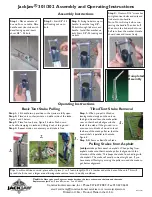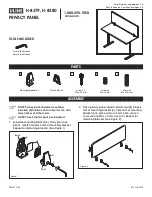
Inspecting and Sharpening
the Cutting-Unit Blade(s)
Both the cutting edges and the sail, which is the
turned-up portion opposite of the cutting edge,
contribute to a good quality of cut. The sail lifts
the grass up straight, thereby producing an even
cut. However, the sail gradually wears down during
operation, lowering the quality of cut even though the
cutting edges are sharp. The cutting edge of the blade
must be sharp so that the grass is cut rather than torn.
A dull cutting edge leaves the tips of the grass brown
and shredded. Sharpen the cutting edges to correct
this condition.
1.
Park the machine on a level surface, raise the
cutting units, engage the parking brake, put the
traction pedal in
NEUTRAL
, put the PTO lever
in the O
FF
position, shut off the engine, and
remove the key.
2.
Examine the cutting ends of the blade carefully,
especially where the flat and curved parts of the
blade meet (
Note:
Because sand and abrasive material
can wear away the metal that connects the flat
and curved parts of the blade, check the blade
before using the machine. If you notice wear,
(
), replace the blade.
g004653
Figure 85
1.
Cutting edge
3.
Wear/slot forming
2.
Curved area
4.
Crack
3.
Examine the cutting edges of all the blades and
sharpen the cutting edges if they are dull or
nicked (
Note:
Sharpen only the top of the cutting
edge and maintain the original cutting angle
to ensure sharpness (
). The blade
remains balanced if the same amount of metal
is removed from both cutting edges.
g000276
Figure 86
1.
Sharpen at the original angle.
66







































